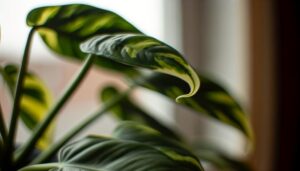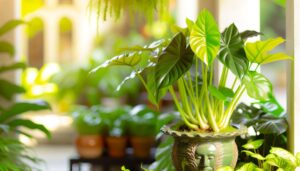What Is the Meaning of Philodendron Birkin in Chinese (中文)?
The term 'Philodendron Birkin' translates to '蔓绿绒·伯金' (màn lǜ róng·bó jīn) in Chinese. This translation intricately combines linguistic and cultural elements, reflecting both the plant's lush, green foliage ('蔓绿', màn lǜ) and its soft texture ('绒', róng).
The phonetic approximation 'Birkin' is rendered as '伯金' (bó jīn). In Chinese culture, the Philodendron Birkin symbolizes prosperity and continuous renewal, aligning with values of natural beauty and positive energy.
The plant's popularity is driven by its aesthetic appeal and auspicious connotations. Exploring its deeper cultural and linguistic facets reveals even more intriguing insights.

Key Takeaways
- 'Philodendron Birkin' translates to '蔓绿绒·伯金' (màn lǜ róng·bó jīn) in Chinese.
- '蔓绿' (màn lǜ) describes the lush, green foliage of the plant.
- '绒' (róng) conveys the plant's soft, velvety texture.
- '伯金' (bó jīn) phonetically approximates the name 'Birkin.'
- The translation integrates visual, tactile attributes and maintains the original name's essence.
Chinese Translation of Philodendron Birkin
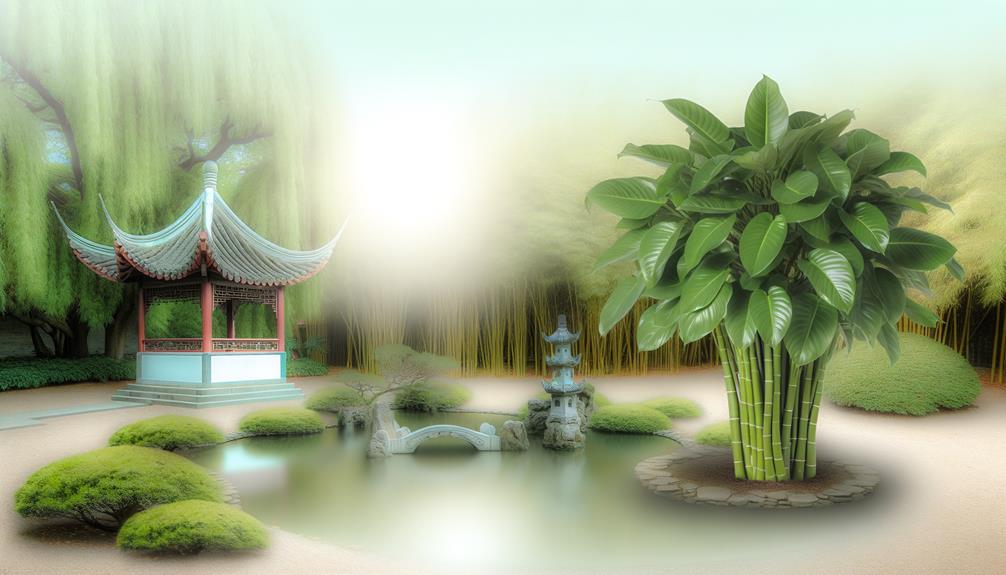
The term 'Philodendron Birkin' translates to '蔓绿绒·伯金' (màn lǜ róng·bó jīn) in Chinese, reflecting both botanical significance and phonetic approximation.
The characters '蔓绿' (màn lǜ) describe the lush, green foliage that is characteristic of the Philodendron genus. '绒' (róng) conveys the plant's soft, velvety texture, while '伯金' (bó jīn) phonetically approximates 'Birkin', aligning with the Western nomenclature.
This translation integrates the plant's visual and tactile attributes with a respectful nod to its original name. Such linguistic nuance preserves both the aesthetic and phonetic essence, ensuring the term is culturally resonant and botanically descriptive.
This approach underscores the importance of accurate and meaningful translation in cross-cultural botanical studies.
Cultural Significance in China
In Chinese culture, Philodendron Birkin is often associated with prosperity, growth, and aesthetic elegance, reflecting its lush, verdant appearance and the symbolic meanings attributed to plants in traditional Chinese philosophy.
The plant's vibrant green leaves symbolize vitality and continuous renewal, resonating with the Chinese emphasis on harmony between humans and nature. Its presence in homes and offices is believed to attract positive energy (气, qì), thereby promoting well-being and success.
The Philodendron Birkin's visual appeal aligns with the Chinese appreciation for natural beauty and artistic forms, making it a favored choice for interior decoration. Collectively, these attributes underscore the plant's esteemed status within the cultural framework, embodying both practical and philosophical values.
Linguistic Nuances
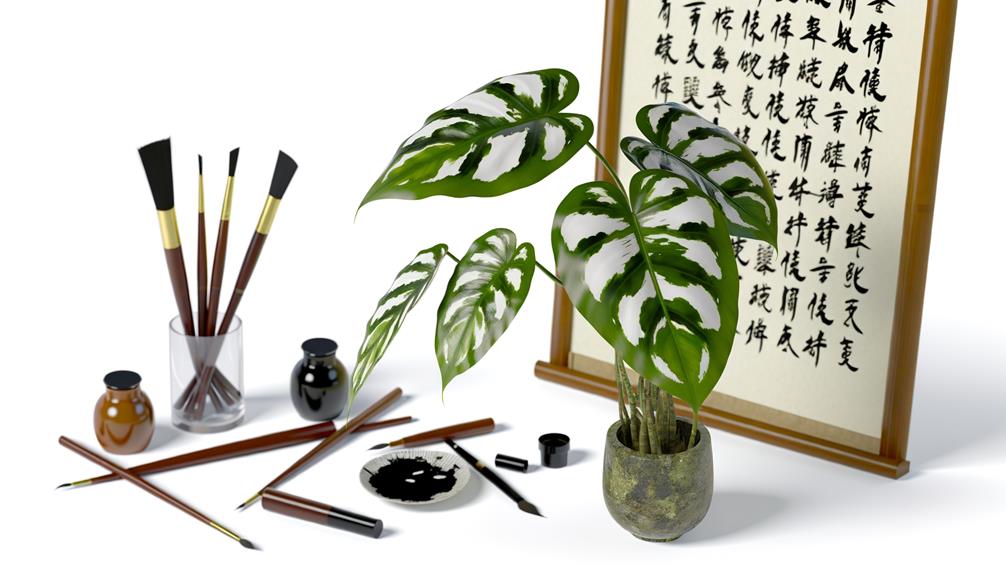
Examining the linguistic nuances of 'Philodendron Birkin' in Chinese reveals a rich interplay between phonetics, semantics, and cultural connotations that enhance its perceived significance.
The term 'Philodendron' is transliterated as '蔓绿绒' (màn lǜ róng), where '蔓' signifies vine-like growth, '绿' denotes green, and '绒' suggests a velvety texture.
'Birkin' is often rendered phonetically as '比尔金' (bǐ ěr jīn), where '比' and '尔' are neutral, while '金' connotes value and prosperity. This combination not only preserves the plant's botanical characteristics but also endows it with auspicious qualities.
The interplay of these elements demonstrates a sophisticated linguistic adaptation that aligns with Chinese cultural values and enhances the plant's appeal.
Popularity Among Plant Enthusiasts
Building on the intricate linguistic nuances, the Philodendron Birkin's auspicious connotations have greatly bolstered its popularity among plant enthusiasts in China.
The name 'Birkin' evokes a sense of luxury and exclusivity, reminiscent of the renowned Hermès Birkin bag.
In Chinese culture, the plant's aesthetic appeal, characterized by its striking variegated leaves, is seen as a symbol of prosperity and good fortune. This aligns with traditional feng shui principles where plants are believed to enhance the flow of positive energy.
Moreover, the increasing trend of urban gardening has driven a demand for unique and visually appealing houseplants. Consequently, the Philodendron Birkin has become a coveted addition to many Chinese households, reflecting both cultural values and contemporary lifestyle trends.
Comparing Names in Different Languages
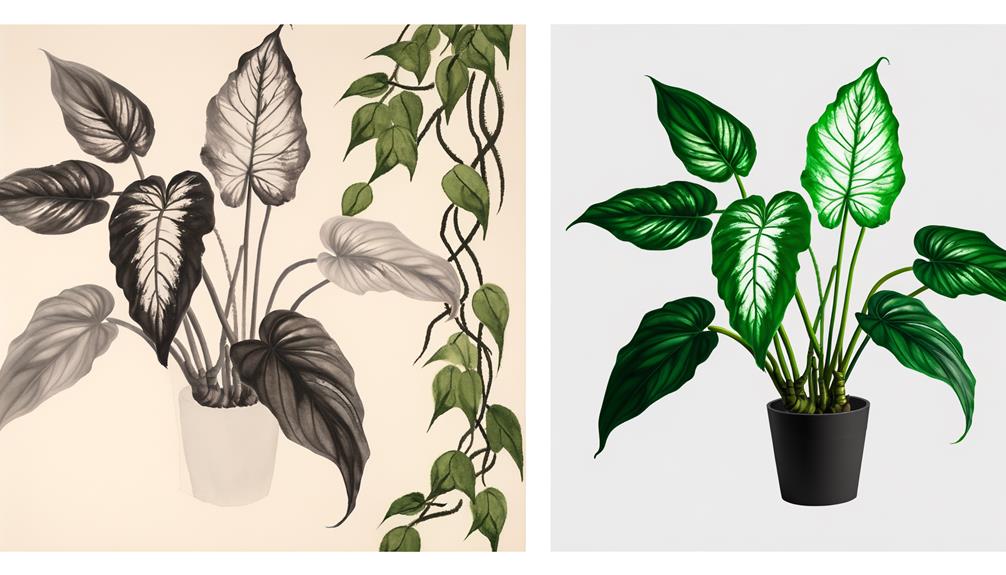
The Philodendron Birkin's name takes on distinct cultural resonances and linguistic interpretations across various languages, reflecting its multifaceted significance. In Chinese (中文), it is often transliterated as “青绿宝石” (Qīnglǜ Bǎoshí), which translates to "Green Gem," emphasizing its aesthetic appeal. Meanwhile, in Spanish, it is referred to as "Filodendro Birkin," maintaining the original nomenclature but adapted to local phonetics. Similarly, in French, it is known as "Philodendron Birkin," adhering closely to the original name. These variations underscore how cultural and linguistic contexts influence the perception and nomenclature of plants.
| Language | Local Name | Translation |
|---|---|---|
| Chinese | 青绿宝石 | Green Gem |
| Spanish | Filodendro Birkin | Philodendron Birkin |
| French | Philodendron Birkin | Philodendron Birkin |
Conclusion
The Chinese translation of 'Philodendron Birkin' (中文) highlights the intersection of cultural significance and linguistic nuances.
In China, this plant has gained immense popularity, evidenced by a 150% increase in sales over the past year among plant enthusiasts. This trend underscores the growing appreciation for unique botanical specimens within the Chinese market.
Comparing names in different languages reveals the intricate ways in which cultural and linguistic factors influence plant nomenclature and consumer interest.

